Walter G. Daniels, a pilot with the 21st Photographic Reconnaissance Squadron, was killed on February 2, 1945, as he tried to bail out of his P-38 aircraft. During the summer of 2007 his family was gracious to share their memories of this unforgotten hero with Remembering Shared Honor, and we hope the short biography will have compiled below will add to his memory.
(See video interview with Walter Daniels' family at the bottom of this page, and see more photos and wartime letters in the Walter G. Daniels Collection.)
——————————————————————
"I would give anything to see you [get married], but maybe my being here will help get this war over sooner, and that is what we are all surely hoping for."
Affectionately referring to each other solely by "brother" and "sis," the correspondence between Lieutenant Walter G. Daniels and his sister Mary Hoffman demonstrates an especially close relationship, even in August 1943 while he underwent increasingly rigorous pilot training to serve a country at war.
In his letters Walter Daniels wrote about his highs, "Sis, just 15 minutes ago I was made a platoon sergeant." His lows, "We haven’t received any mail for about a week and everyone is getting so darn homesick. This damned place doesn’t help any either. You look to your right, to your left, in front of you, behind you and all you can see is blue drab barracks." And like so many American service men his age, girls: "Enclosed is the last letter Duckie wrote to me. Every now and then she feels happy and this is the result. . . I am enclosing it so you can see how crazy she is sometimes. It is pretty cute though isn’t it?"
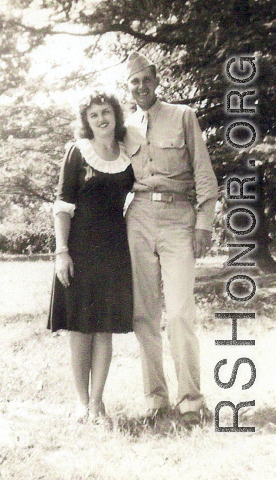
"Joan, my other little honey bunches, out in Iowa, pulled a surprise on me the other day. She sent me a swell little sweater that she knit for me herself."
". . .I called her up and now I have a date. The girl with the C ration book and car also holds her own when it comes to looks and personality. How about that sis? I am really making up for all of the time I lost in Florida."
Walter Daniels wasn’t always a lady-killer. Born August 23, 1923, he spent many of his early years with the moniker "lard" due to his wider-than-average appearance. Despite this he was always smiling, joking, and spreading joy to others. When they were very little he sought to get revenge on his sister for cutting his hair, saying "someday I’m going to do something to you!" And he did do something—in her shoe—which still brings his sister to laughter over half a century later.
By age 19 he had emerged as a handsome and well-liked teenager with a desire to fly, but the opportunity World War 2 provided almost passed him up. His parents were never enthusiastic about his plans to join the Army Air Force, but these plans were never more in jeopardy than when he got his little finger caught in a neighbor’s door. The doctors at the hospital wanted to amputate the damaged digit so his mother took him to a second doctor who sewed the tip back on; a fateful decision. Though intact, the new finger was stiff and the Army Air Force wouldn’t pass him. They sent him home with instructions to rub his finger with "dog oil", a skin-softening remedy well known at the time, which he did every night or whenever he thought of flying. Eventually, the treatment worked and when he went back to the enlistment office they allowed him to join.
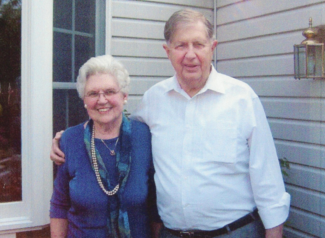
His training took him from Akron, Ohio to Santa Ana, California, and finally to La Junta, Colorado where he graduated. Despite complaining about "vertigo"—the false sensation of turning or swaying—during maneuvers and instrument-only flights, he was successful in training wherever he went. He scored perfect marks on his flight tests, and earned promotions to Platoon Sergeant and later to First Lieutenant--perhaps due to the innate intelligence he modestly dismissed. He was also well liked by his peers. After the war many who served with him would write letters to his family expressing what a bright light he was in those dark days, always smiling, always laughing, always saying something interesting.
The correspondence from this period reveals the character and personality of Walter Daniels: amiable, easy-going, and dedicated to his family.
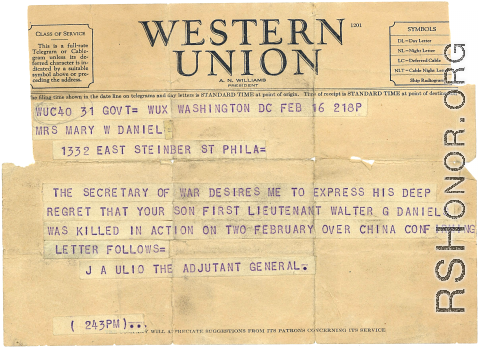
"Sister, thanks for sending my flight certificate and fixing my bank account for me. You'll go to heaven for that."
Frequently he made homesick inquiries about the family, "Has [the dog] had her puppies yet? I bet when they arrive it will be the biggest day in the Daniels family since I left for the army."
He also expressed fruitless wishes to witness his sister’s imminent wedding, "The outlook on my chances aren’t bright. One fellow tried to get overnight leave to return to Pittsburgh to get married and the lieutenant in charge refused. So I don’t think I have much of a chance to get home to witness a wedding."
For a cadet to receive his flight wings was a big event, and it was no less so for this eager young man, "I think [flight wings] are about the most beautiful things I have ever gazed upon. They will be especially so when I am able to look down and see them pinned on my chest."
Upon receiving his flight wings Walter Daniels was assigned to the 21st Army Air Force Photo Reconnaissance Squadron, "the eyes of the 14th air force." The squadron had several detachments in and around Kunming, Yunnan, flying photograph reconnaissance missions all over Southern China. By providing photos and map intelligence to Allied planners the 21st enabled groups like the Flying Tigers of the 14th air force to attack Japanese ground troops, transport, and ships, in turn preventing thousands of casualties. Extensive aerial reconnaissance on the coast of Formosa (Taiwan’s main island) was also conducted by the 21st in the last months of the war to prepare for the Allied invasion.
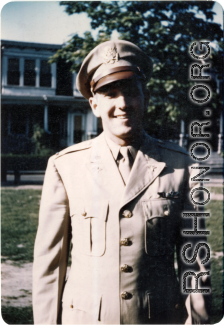
Before leaving he told his sister he wanted to get a color camera: "I’ll probably be seeing a lot of interesting sites," for a small town boy from America this is understatement to be sure. After visiting Agra, India and being photographed at the Taj Mahal he began his tour of duty in China. As a curious young man, flying in the China India Burma theatre of war was life’s biggest adventure yet.
He flew the F-5/P-38 "Lightning," one of WW2’s fastest planes, and loved it. Armed only with cameras and protected solely by speed of its twin turbocharged booms, the P-38 was a Pacific theatre mainstay and the primary "photo falcon" of the 21st Reconnaissance Squadron. For Walter Daniels, flying this plane in this war was the fulfillment of several years of training and yearning to fly. Truly, how many men called to fight war can ever say they are happy doing it? Yet his sister Mary Hoffman remembers "he thought he was in the right place at the right time, doing what he wanted to do." And what he wanted to do was fly.
His final act of service was a routine flight on February 2nd, (Groundhog Day) 1945 over Suining, China. After completing his aerial reconnaissance mission he attempted the long return to base. It is believed a strong cross wind must have thrown him off course. In a letter to Mary Hoffman one serviceman said in treacherous terrain and stormy weather conditions even experienced fliers easily become lost. Far from base and out of fuel, Walter Daniels was instructed to bail out of his plane. Unfortunately the design of the P-38 was such that, in the words of the same servicemen, "everybody agrees it’s pure luck to bail safely out of it." And when he did--he was struck by the twin booms horizontal stabilizer, a feature relatively unique to P-38s.
We cannot know exactly what came to pass that evening 63 years ago. We cannot know what thoughts were going through Walter Daniels’ mind as he tried to navigate back to base through the inky night. We cannot know whether he was thinking of solely his own survival or of his family, sister, and perhaps the wedding he never got to attend. "Just think, you won’t be Miss Daniels much longer—feel funny? I’ll be thinking of you between now and then, just close your eyes as you walk down the aisle and make believe that is me, as best man, waiting down at the altar." All we can know with certainty is that a bright, 21-year-old life was ended unjustly by a dark and stormy night.
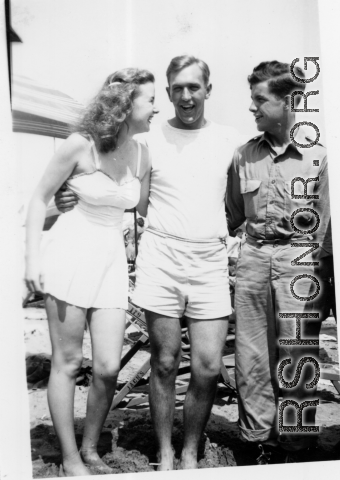
Initially the reports of his death contained conflicting place names and gave his sister hope he might still be alive, the whole affair just a mistake. A friend of the family still in the service—and in the CBI—arranged a special trip, finally teasing out the details of Daniels' loss from Walter Daniels’ commanding officers. After assuring the family there was no mix-up regarding the location, but rather just inconsistencies regarding the Romanization of Chinese place names, they could no longer maintain their disbelief. Already facing difficulties from the onset of blindness in Walter Daniels’ father, the unexpected loss of the family’s eldest boy was a shattering blow. His mother was always a strong woman but the sudden death made her "cave in." Mary Hoffman explains how they struggled to cope: "It was the worst time ever…. A natural death, sometimes you can understand, but a young death like that…when he just thought he was getting out of a plane…."
Afterwards the family was so distraught they scarcely could find the strength to open up further correspondence from the government, fearing bad news. It wasn’t until years later they discovered they were entitled to financial death benefits and that Walter Daniels had been awarded the Purple Heart.
Mary Hoffman often wonders what her brother would have been if he had survived just six months longer and seen the end of World War 2 on August 15th 1945. What would he look like, now in 2008? Everyone who knew him remembered him as a good-looking, amiable young man brimming with potential. What would he have done with his life? He was serious about Joan and thought they might marry upon his return. He was also fascinated by flight and likely would have made a career out of planes. War may have intervened to cut these dreams short, but not before he could contribute to the US-China Allied war effort and leave an indelible impression on his loving family. The sister who adores him is confident of the mark he left on this world: "He was always smiling and that everyone who knew him liked him. He was one of those people you would remember."
For these reasons he will not be forgotten.
Walter G. Daniels
ID: 0-777135
Entered the Service From: Pennsylvania
Rank: First Lieutenant
Service: U.S. Army Air Forces, 21st Photographic Reconnaissance Squadron
Died: Friday, February 02, 1945
Buried at: Honolulu Memorial
Location: Honolulu, HI, USA
Plot: C Grave: 140
Awards: Purple Heart
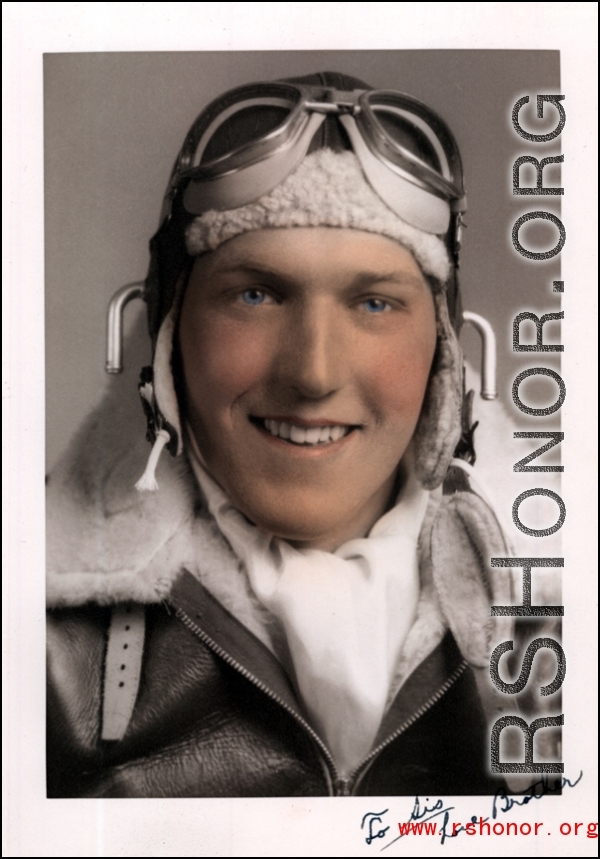
Comments
21st Photo Recon Squad
Date: 8/13/2015, 6:53 PM, EST
Name: Elaine Pecci
Email: aepecci@comcast.net
Number: 12
I'm looking for information on my uncle, Lt Herman Perry who was in the 21st Photo Recon Squad. I came upon your site because you do have some pictures of someone from that squadron. But I did not see anyway to contact anyone on that page directly. If there is a way to do that, could you please let me know how? Thank you.